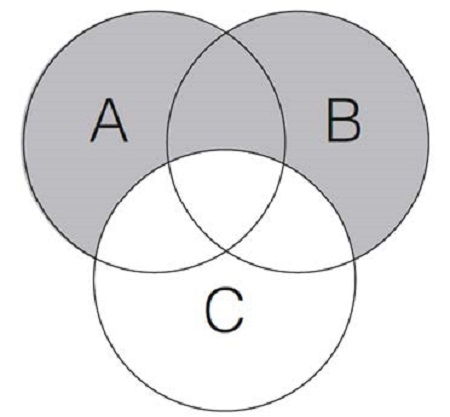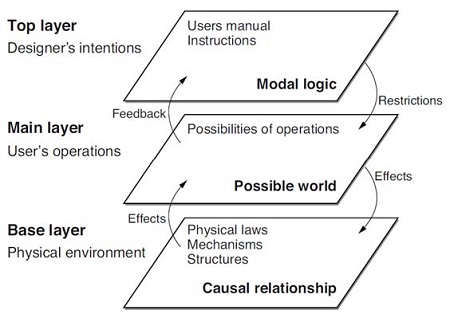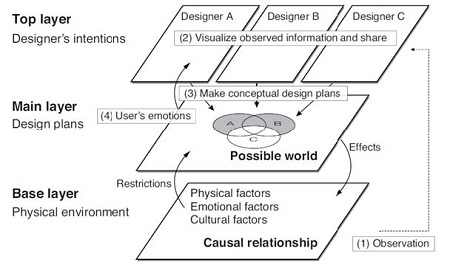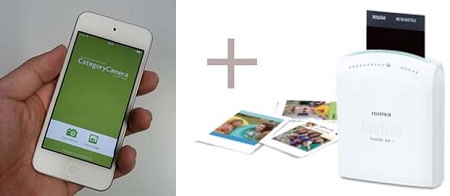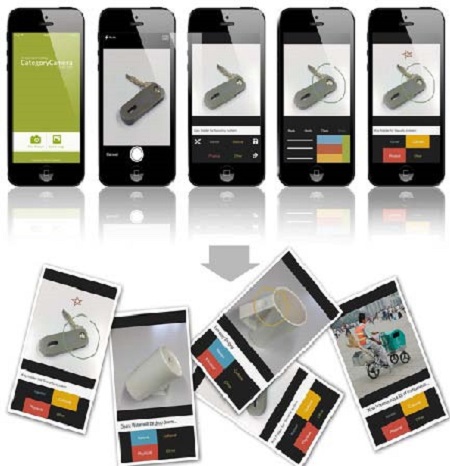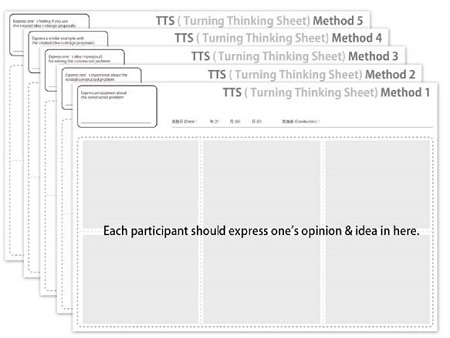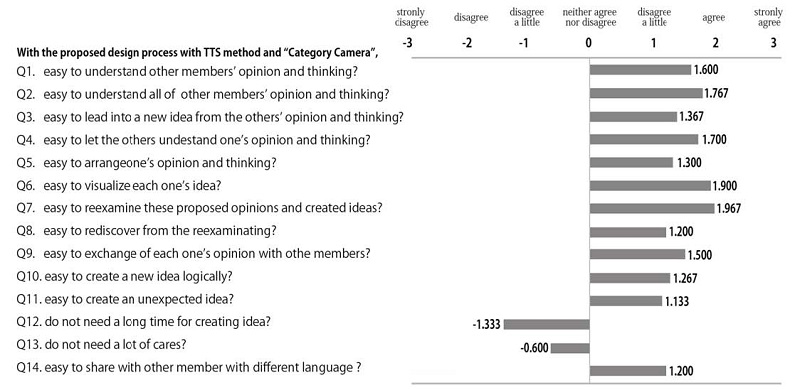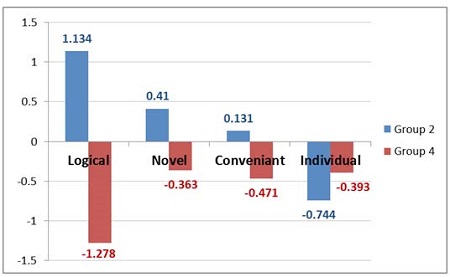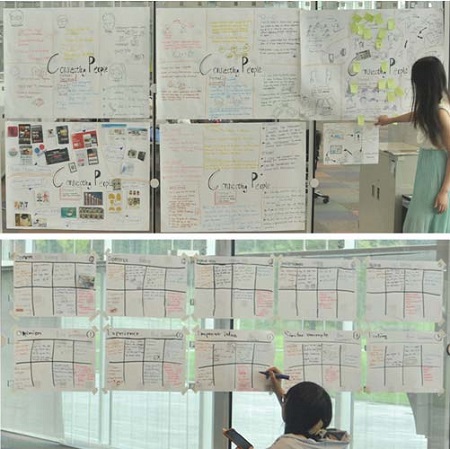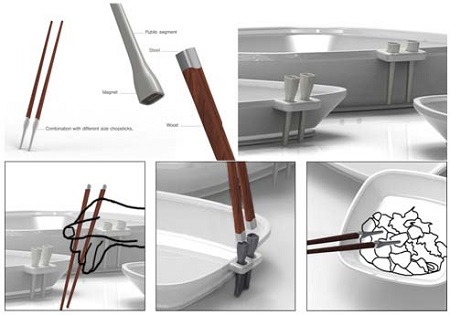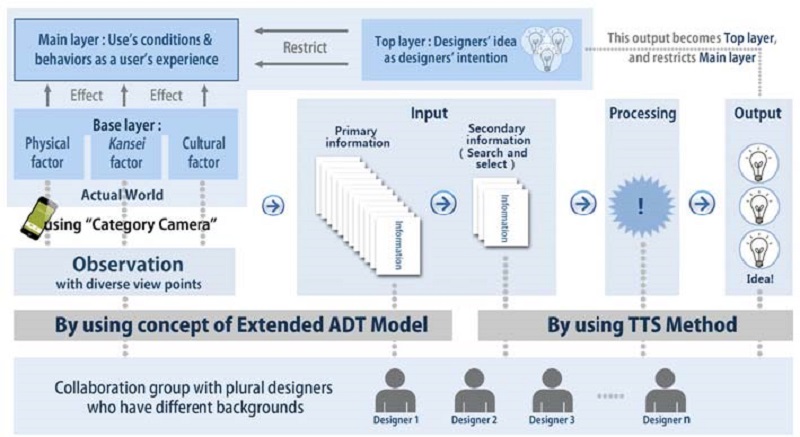
Proposal and Evaluation of Design Support Tools for Logical Collaborative Design Process
Abstract
Background In the design field, collaboration is a key method that can widen the conceptual design horizon beyond an individual’s boundaries. Collaboration helps to share knowledge and develop ideas jointly in the design process. It also helps to communicate diverse viewpoints. The ADT model is a representational model for conceptual design. It is used to grasp artifacts as a communication medium between designers and users. During the observation process, three influential factors—physical, emotional, and cultural—are observed through diverse viewpoints.
Methods This paper discusses a method to enhance the design process by sharing observed information with team members who have diverse viewpoints and using the information to create novel ideas with these proposed support tools. It then evaluates the proposed tools empirically with ISDW participants. Moreover, the these proposed tools are considered based on the results of using at ISDW as a case study.
Results These two collaboration support tools, named “Category Camera” and the TTS method based on the extended ADT model are proposed in this research. Each process is visualized and shared by using “Category Camera” and the TTS method to share visual information such as idea sketches, notes, and photos. The experiment evaluating the proposed design process with “Category Camera” and the TTS method reveals that these tools help participants share and create opinions and ideas logically and beyond an individual’s boundaries. By using these tools, designers in a team can visualize their idea, share it with others, and create a novel design plan based on multicultural backgrounds. An example of the design process using “Category Camera” and the TTS method is provided in order to show the effectiveness of the proposed method.
Conclusions In this paper, a method to support the collaborative design process, using “Category Camera” and the TTS method, is developed based on the extended ADT model. “Category Camera” and the TTS method help designers understand users’ circumstances and needs by observing three factors—the physical factor, the Kansei (emotional) factor, and the cultural factor. Through these factors, a designer can determine users’ needs, including unconscious needs that are difficult to uncover using a survey questionnaire. An example in which “Category Camera” and the TTS method are used for collaboration among design teams is shown. With the proposed method, the designers were able to find a unique design solution that reflected multicultural values. While the efficiency of the method is clear, there are some additional considerations. First, the format of the worksheets used in the TTS method should be reconsidered. In the current study, sheets used for different steps have the same format. A more effective format for collaboration should be developed. Second, designers spent too much time on the first and second steps of the TTS method. In order to simplify use, procedures that took a long time should be modified by introducing the use of electronic technologies.
Keywords:
Collaboration, Diverse Viewpoints, Logical Design, Design Tool, Observations1. Introduction
When we travel abroad, we are surprised with new and different objects and cultures. This surprise stimulates us and pushes the boundaries of our personal experience. According to Harada and Lee’s research in the field of Kansei engineering, Kansei is the source from which to evaluate and create a new idea, and it is linked with personal experience [1, 2]. In other words, many diverse experiences help a designer to have a range of viewpoints. In the design process, the concept of diverse viewpoints is indeed one of the most important factors contributing to the creation of novel ideas. Leung et al. report that the experience of living abroad affects the creation of new ideas [3]. According to James, having different viewpoints in an observation process is a key driver of the creative process [4]. Matsunami contends that users have three types of needs for design and emphasizes the importance of observing users’ behaviors (experiences) in their daily life to find out their potential needs. Diverse viewpoints is then a powerful method to find out users’ potential needs. Brown and Wyatt emphasize the importance of observations by multi-disciplinary teams in the design process [5]. Kiyokawa et al. report that personal characteristics influence the process of knowledge activation in creative work [6]. Such diverse viewpoints in the observation process can uncover unexpected user needs. However, it is difficult to suddenly alter one’s personal viewpoint, formed through one’s experiences. In order to expand the conceptual horizon, collaboration is an important and accessible method. Collaboration widens the domain of possibility of design solutions. Based on these premises, Kang initiated the ISDW (International Summer Design Workshop) in 2008. The first workshop, named HI-FUN Design, was conducted with the students and professors of Hongik University, Korea, and Future University Hakodate, Japan. Today, the ISDW includes a variety of participants from countries such as Korea (Hongik University, Inje University and Yonsei University), Japan (Future University Hakodate, Muroran Institute of Technology and Sibaura Institute of Technology), China (Beijing Institute of Technology and Guangdong University of Technology), Singapore (Nanyang Polytechnic), and Thailand (Chiang Mai University). The 2015 edition of the ISDW was conducted in Singapore over 12 days in August, with 32 participants. At the ISDW, each group consists of participants of different nationalities and design majors as inner factors (background). Different nationalities are likely to lead to diverse viewpoints due to different experiences. Many discoveries are expected to derive from diverse viewpoints in the observation process. However, based on the feedback of those who had attended multiple ISDWs, it became clear that different inner factors like a different nationality or design major hampered the effective sharing of each participant’s observations. This paper discusses a method to enhance the design process by sharing observed information with team members who have diverse viewpoints and using the information to create novel ideas. It then evaluates the proposed method empirically with ISDW participants.
2. Collaboration in the Design Process
As described above, in the design field collaboration is a crucial method that widens the conceptual horizon. Fig. 1 illustrates the basic idea of collaboration with various viewpoints in the design process [7]. Note that this figure is only a theoretical illustration and that the domain of the idea created by each designer may not exist in the same size and position as in the figure.
In this figure, A, B, and C represent designers with different inner factors. Each circle represents the set of innovative solutions that can be reached by a person. In this case, A, B, and C have different inner factors, such as different experiences, different knowledge, and different skills. Therefore, just as their expected outcomes as individuals are different, so are their sets of reachable solution ideas. This is why the three circles do not overlap entirely. If these three designers had very different inner factors, the overlapping area would become smaller. If on the contrary these three designers had very similar inner factors, the overlapping area would become larger.
Assume a case in which A, B, and C cooperate in a design process from C’s perspective. The white area C represents C’s normal set of solutions, while the gray area (A and B) represents additional knowledge beyond C’s reachable solution ideas, which we will call the “prime solution ideas” for C. In brief, if designer C collaborates with designer A and B, he/she can obtain the prime solution ideas. Collaboration helps designers share their knowledge and develop ideas jointly in the design process. The situation above may thus lead to the creation of more varied and innovative ideas due to a broader conceptual domain. It can be described with the following formulas:
R = (A ∪ B ∪ C) (1)
P = (A ∪ B) — C (2)
R represents the entire set of reachable solution ideas under the collaboration of A, B and C. P represents the set of prime solution ideas for C. An effective design process requires a method of collaboration allowing the designers to reach elements included in P.
3. Developing Methods for Design
This section describes collaborative design based on the extended ADT , and proposes a collaboration support tool based on the extended ADT model, “Category Camera,” and the TTS method.
3. 1. Extended ADT Model
Suto proposes a model for conceptual design, named Alethic/Deontic/Temporal (ADT), based on the relationship between an artifact (designed object), a designer, and a user [8]. This model consists of three design layers: base layer, main layer, and top layer (Fig. 2). The base layer represents causal relationships that derive from physical laws, mechanisms, and structures. This layer reflects the target user’s environment. The top layer represents operational restrictions based on designers’ intentions. Instructions or warnings by the designers are articulated at this level by using modal logic expressions. The main layer represents state transitions caused by operations. The user’s possible operations are expressed in this layer. According to the ADT model, the user’s behaviors are affected by physical laws and restricted by designers' intentions. In other words, we have to observe the relationship between cause and effect in design.
The respective viewpoints of designers who have different inner factors can create more diversity. Therefore, collaborative design among designers of different nationalities and design majors may expand the domain of possible solutions. This process lets the designers bring awareness to prime solution ideas as described in the previous section. To illustrate this situation, Kang et al. propose the extended ADT model, which represents a concept of collaborative design based on the ADT model (Fig. 3) [7].
In the extended ADT model, the base layer is extended to include the following three factors. (1) Physical factor: Artifact factor like “mental model” and “affordance”; (2) Kansei (emotional) factor: Human factor like “user’s emotion” and “feelings”; and (3) Cultural factor: Circumstances surrounding human and artifact, like “culture” and “custom.” In addition, the top layer represents designers’ intentions, which might differ depending on the individual. The outcomes of their creative work are shown in the main layer. As described in section 2, each circle does not overlap completely. With the advantage of collaboration with diverse viewpoints, the domain of possible design is broadened. The extended ADT model allows us to understand the effects of collaboration in the design process.
3. 2. Collaboration Support Method Based on the Extended ADT Model
The survey questionnaire is one of the research methods most commonly used by researchers and designers attempting to explore users’ opinions and needs. However, it is difficult to uncover needs of which users themselves are potentially unaware through a survey questionnaire. Tomita et al. emphasize that observing users’ behavior is important in creating innovative product design [9]. Yamaoka further proposes the Human Design Technology (HDT) method for effective observation in the product design process [10], emphasizing that designers have to observe users’ behavior more actively. Thus, many designers are observing and recording using pens and cameras. The cameras used during the observation process are of the following three types. (1) Digital camera: Photos can be checked immediately and taken in unlimited numbers, but information has to be selected from numerous photos, and printing the selected photos takes time. (2) Instant camera: Printed photos provide tangible information at the time the photo is taken, and designers can write or draw additional information on the photo using a pen. We can record important information that we find during the observation process, but there are only limited opportunities, and special film must be procured for the instant camera. The camera too is not small.) (3) Smartphone camera: Photos can be uploaded directly to SNS or the Internet, and taken in unlimited numbers, but they also have to be sorted and printed.
Upon evaluating these cameras based on the concept of the extended ADT model, Kang’s research team propose a camera application named “Category Camera” for a small device such as a smartphone (Fig. 4) [11].
With an instant Bluetooth printer, a printed photo can be obtained immediately. “Category Camera” features the following characteristics with regard to the observation process. (1) Unlimited photo taking opportunities, that is, designers can retake photos until they are satisfied with the information obtained. (2) Ability to verify the physical, Kansei (emotional), and cultural factors of the extended ADT model. (3) Ability to check the photo immediately. (4) Ability to input (record) additional information on the photo such as a hand drawing or a sentence. (5) Convenience of a smartphone, which everyone is accustomed to, that is, an extra device is not needed. (6) Ability to obtain the printed photo as tangible information, that is, easy to use in the analysis process using the KJ or TTS methods. (7) Ease of connection to the Internet. Fig. 5 illustrates how to use “Category Camera” and what kind of results designers can obtain using this application.
Generally, conversation (language exchange) is a standard way to share opinions and ideas with others. Sharing through conversation is convenient because it does not require any tools. However, conversation is likely to be influenced by time constraints and is challenging to conduct simultaneously with work. Moreover, for multicultural design teams, due to linguistic differences, it is difficult to communicate and share information in the group immediately. Meanwhile, visualization is another way to share opinions and ideas with others. By using visual information such as photos, sketches, and notes, which are not affected by time constraints, work can be conducted simultaneously without a common language.
In addition, visualization as meta-recognition is key in perceiving an idea in the design process [9]. Visualization as meta-recognition is a mode of visual expression through tools such as idea sketches, notes, and photos. Beyond mere tools of expression, these idea visualization tools are cognition tools as well. Takano et al. [12] propose a tool for supporting conceptualization by using the visualized languages of adjective, noun, and mimetic words in a group. Thus, the authors propose a novel information sharing method for the design process based on the extended ADT model to achieve information sharing in multicultural design teams. This method is called TTS (Turning Thinking Sheet) [13]. The TTS method proceeds by drawing information on worksheets based on the extended ADT model. An example of these worksheets is shown in Fig. 6.
The TTS method is used in the process of observation, idea sharing, and creating new design plans. Team members exhibit their ideas on TTS pages as visual information like idea sketches, notes, and photos. The TTS method is composed of the following four steps:
- Step 1: In the observation process, each member records their observations by using idea sketches, memos, or photos on the first page of the TTS worksheets.
- Step 2: Members categorize observed data according to three factors (physical, emotional, or cultural) and record that on the second page. Then, each member shares his or her own observations via visualized information (meta-recognition approach).
- Step 3: All members act in concert to sketch out a conceptual design that fulfills the users’ needs on the third page.
- Step 4: On the fourth page, members explain how users feel when they use the item in question. Every member has to share their opinion, experience, and idea on each TTS page and share their own TTS pages with all members of their team.
4. Experiment to Evaluate the Proposed Methods
4. 1. Method of Experiments
The purpose of this experiment is to clarify the effectiveness of the proposed design process using the TTS method and the “Category Camera.” The proposed design process was evaluated with the help of 35 ISDW 2013 participants from Japan, Korea, China, and Singapore.
As not all participants were familiar with “Category Camera” and the TTS method, Kang conducted a lecture on how to use these proposed design methods. The participants were then separated into groups, conducted observations with “Category Camera,” and shared the observation results with each team member using the TTS method. After that, each group created a design solution based on the results of the proposed design process. Finally, each participant evaluated the proposed design process.
Fourteen evaluation criteria were evaluated based on degree of agreement with the statement (strongly agree – agree – agree a little – neither agree nor disagree – disagree a little – disagree – strongly disagree). Fig. 7 in the next section shows the evaluation criteria and their respective evaluation scores.
4. 2. Results of Experiment
All 35 participants evaluated the proposed design process using the 14 evaluation criteria. However, there were 5 inadequate responses; the other 30 were adopted as the sample set. Fig. 7 shows the results of the evaluation of the proposed design process.
Q7, Q6, and Q2 in particular score highly. These results suggest that the proposed design process makes it easier for participants to understand others’ opinions and to reexamine these proposed opinions and ideas. Moreover, the proposed design process helps to visualize each participant’s idea. However, many participants answered that the proposed design process is time consuming and requires a lot of care. Table 1 shows the results of the analysis of the principal components.
The 1st principal component stands for “logical design process based on inspiration from the others” (logical design process). The 2nd principal component stands for “novel design process based on group work” (novel design process). The 3rd principal component stands for “convenient for creating an idea in the design process” (convenient design process). The 4th principal component stands for “individual design process based on each participant’s inner insight” (individual design process). After that, the two groups (Group 2 = 1.134, Group 4 = -1.278, (F(1.10) = 7.090, p < .05)) that showed the largest difference in the “logical design process” scores were extracted. Fig. 8 shows the principal component results of these two groups.
Group 2 participants used large format paper (size A0) for the TTS method. Moreover, they used not only sentences but also a lot of visual information such as images, printed “Category Camera” photos, sketches, and Post-it notes. In contrast, Group 4 used small format paper (size A3) with a lot of writing. This indicates that aggressive use of rich information like images, printed “Category Camera” photos, sketches, and Post-it notes helps share and understand others’ opinions, thinking, and ideas. This method leads participants into a more objective idea creation process beyond the limits of any one participant’s capacity. These results hint at how to use the proposed design process in collaboration for more logical idea creation beyond any one individual’s capacity.
5. Case Study
In this section, a design process using the TTS method in a multicultural design workshop is shown as an example case. This workshop was held in Seoul, Korea. Team members were students from Japan, China, and Korea. The assignment given to the teams was “Eating in Korea.” The TTS method was used in the observation, idea sharing, and design processes. Scenes of participants using TTS worksheets in the workshop are shown in Fig. 9.
5. 1. Observation
During the workshop, members were instructed to observe South Korean culture. They noticed the following: (A) Tourists seek to taste different foods during their travels; (B) A party with friends or family is always pleasant; (C) Koreans usually share a dish with others and use chopsticks as eating utensils; (D) There are many side dishes in Korean cuisine, which requires a lot of space on the table, and chopsticks set across a side dish easily fall onto the table; (E) Sticking chopsticks into the food is considered rude in Korea.
5. 2. Visualization for Sharing
The data from the observation process were divided into three parts, that is, the physical factor, the emotional factor, and the cultural factor. Members then shared their own observations with the group. Regarding the dish-sharing habit mentioned in (C) above, a Japanese participant pointed out that the Japanese usually prefer not to use their own chopsticks for shared dishes. Had the team consisted of only Korean members, this idea would not have surfaced because sharing food with their own chopsticks is quite usual for Koreans. This observation was added to the TTS. The shared information was generalized and rearranged. The results of the sharing process are shown in Table 2.
5. 3. Conceptual Design
After members shared their observations with their team, members considered all information together and devised objects fulfilling users’ needs. In this workshop, a team decided to develop adjustable chopsticks for Korean food parties. The tops of the chopsticks are made with magnets. The front parts of the magnets are attached to the right side of each plate. When users help themselves from the side dishes, they just change the tops of the chopsticks with the front part attached to the dishes. After helping themselves, they return the front part to its original position.
5. 4. Considering Users’ Emotions
The new chopsticks have been designed to make sharing side dishes more convenient. Using these new chopsticks may feel more sanitary to users sharing food with others. The new chopsticks are easy to use, require little space, and do not obstruct the serving of food. Moreover, with the use of these chopsticks, the table becomes more tidy because there is no longer any need to lay chopsticks atop side dishes. The conceptual design of adjustable chopsticks is shown in Fig. 10.
6. Conclusion
In this paper, the author has extended the ADT model to apply to a collaborative design process. The model consists of three layers: base layer, top layer, and main layer. Collaborative design can expand the design plan potential. In addition, a method to support the collaborative design process, using “Category Camera” and the TTS method, is developed based on the extended ADT model. “Category Camera” and the TTS method help designers understand users’ circumstances and needs by observing three factors—the physical factor, the Kansei (emotional) factor, and the cultural factor. Through these factors, a designer can determine users’ needs, including unconscious needs that are difficult to uncover using a survey questionnaire. An example in which “Category Camera” and the TTS method are used for collaboration among design teams is shown. With the proposed method, the designers were able to find a unique design solution that reflected multicultural values. Fig. 11 shows the whole design process using “Category Camera” and the TTS method based on the extended ADT model.
While the efficiency of the method is clear, there are some additional considerations. First, the format of the worksheets used in the TTS method should be reconsidered. In the current study, sheets used for different steps have the same format. A more effective format for collaboration should be developed. Second, designers spent too much time on the first and second steps of the TTS method. In order to simplify use, procedures that took a long time should be modified by introducing the use of electronic technologies.
Acknowledgments
This research was conducted with the help of Grants-in-Aid for Scientific Research from the Japan Society for the Promotion of Science (No. 26350013).
Notes
This is an Open Access article distributed under the terms of the Creative Commons Attribution Non-Commercial License (http://creativecommons.org/licenses/by-nc/3.0/), which permits unrestricted educational and non-commercial use, provided the original work is properly cited.
References
- Harada, A. (1998). The definition of Kansei, Evaluation of Kansei 2, Report od Modeling the Evaluation Structure of KANSEI 1998 (pp. 49-56).
- James, W. Y. (2003). Technique for Producing Idea. London: McGraw-Hill.
- Kang, N., & Miya, N. (n. d.). Study on Value of Visualizing and Sharing with TTS Method.
-
Kang, N., & Suto, H. (2013). How to observe, share and apply in design process?. In Design, User Experience, and Usability. Design Philosophy, Methods, and Tools (pp. 498-505). Springer Berlin Heidelberg.
[https://doi.org/10.1007/978-3-642-39229-0_53]

- Kang, N., Suto H., & Patitad, P. (2014). Role of Design Process Based on Expended ADT Model and TTS Method- Focused on International Design Workshop as Case Studies -. Journal of Integrated Design Research, 13(1), 108-116.
- Kang, N., & Yamamoto, T. (2014). Approach on the application to support Observation and Analysis in Design Process, 2014 KSDS Spring Conference Proceeding (pp.94-95).
- Kiyokawa, S., Washida, Y., Ueda, K., & Eileen, P. (2010). Jouhou no Tayousei ga Aidexia Seisei ni Oyobosu Eikyou no Kentou. Cognitive Studies (Japan), 17(3), 635-649.
- Lee S., & Harada, A. (1998). A Kansei Evaluation of Image Impression by the Objectivity of Kansei Information. Japanese Society for the Science of Design, 45, 254-255.
-
Leung, A. K. Y., Maddux W. W., Galinsky A. D., & Chiu C. Y. (2008). Multicultural experience enhances creativity: the when and how. American Psychologist, 63(3), 169.
[https://doi.org/10.1037/0003-066X.63.3.169]

- Suto, H., Kawakami, H., & Katai, O. (2004). A representational model for artifacts based on the modality of operations and states. Trans. of the Society of Instrument and Control Engineers, Series E, 3(1), 40-48.
- Takano, S., Sato, K., & Matsuoka, Y. (2011).Value Growth Design Model Towards an Embodiment of Timeaxis Design. Japan Design Society, 58, 68-69.
- Tomita, Y., & Ishibasi, K. (2013). ステップアップ 独創的な製品を生み出すためのイノベーティブ思考法 [STEP UP Innovative thinking for creating an ingenious product]. 日経ものづくり, (704), 76-81.
- Yamaoka, T. (2003). ヒューマンデザインテクノロジー入門 [A primer of human design technology]. Tokyo: Morikita Publishing Co., Ltd.
